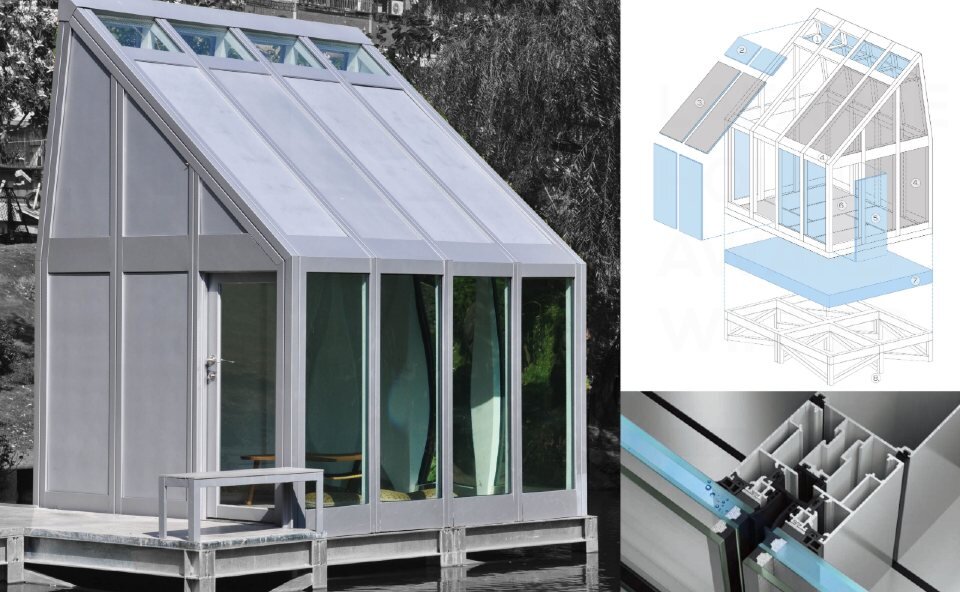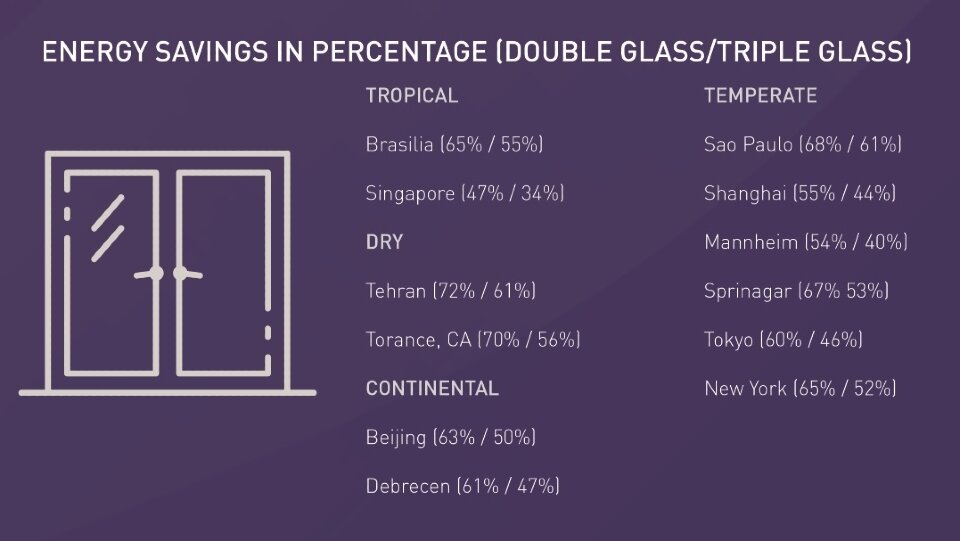Water-filled Windows Save Energy and Reduce Global Carbon Emissionshttps://techxplore.com/news/2020-07-water-filled-windows-huge-splash-energy.html
... Though the area windows occupy may be small on a building, their insulation capacity is much worse than a normal wall surface and small changes can lead to up to 25% energy savings for the whole building.
Dr. Gutai has been researching the concept for over a decade and his latest study, published in Elsevier's journal
Energy and Buildings, in collaboration with Dr. Abolfazl Kheybari, of the University of Kaiserslautern, demonstrates how "water-filled glass" (WFG) can revolutionize building design and performance when used as part of a wider heating system.
The research reveals that WFG systems perform well in any inhabited climate—keeping buildings in hot climates cool, and buildings in cool settings warm—without requiring an additional energy supply.

The WFG system involves connecting the water-filled window panels to a storage tank using pipes hidden in the walls, so fluid can circulate between the two. This system allows the "water houses" to cool and reheat themselves, without needing an additional energy supply for most of the year.
The heat is stored in the tank and, if the temperature drops, it can be brought back to the walls to reheat the building using a monitoring system similar to central heating. Alternatively, the stored heat can be used for hot water supply.
The reason why this process saves energy is because water absorption and pumping take much less energy than HVAC systems (heating, ventilation, and air conditioning).
The technology also has other benefits, including acoustics, less need of "shading" (methods used to avoid overheating and the greenhouse effect), and there is no need to color the glass to improve energy efficiency, so it has aesthetic benefits too.
Dr. Gutai has developed a more sophisticated version of the system by adding a heat pump, which can heat and cool the water depending on the season—and this is the system he examines in the latest research paper. Dr. Gutai joined Loughborough University in 2017 and has used data gathered on the two water houses to develop a simulation system that can evaluate the energy performance of such structures.
The main findings of the study are:
- The WFG system is able to use the absorption of the water effectively to improve the energy performance of glass
- The water layer lowers the load for heating and cooling effectively, minimizing daily and seasonal peaks
- The WFG system saves energy in all major inhabited regions (every climate region except polar) with savings of:
- 47%-72% compared to double glass (with low-E) and
- 34%-61% compared to triple glass
Glass is currently a liability in buildings as it compromises energy consumption, thermal comfort, acoustics and other aspects. WFG changes this paradigm and turns glass into an opportunity for sustainable construction. It shows us that thinking holistically about buildings and building components leads to a more efficient and sustainable built environment. In case of a window for example, if we see it as an isolated system, solar overheating is a challenge that needs to be remedied with cooling. If we approach this holistically, the heat surplus is an opportunity because the same heat is missing from somewhere else (i.e. colder part of the building or hot water supply)."
Matyas Gutai et al.
Energy consumption of water-filled glass (WFG) hybrid building envelope,
Energy and Buildings (2020).
https://www.sciencedirect.com/science/article/abs/pii/S0378778819328944